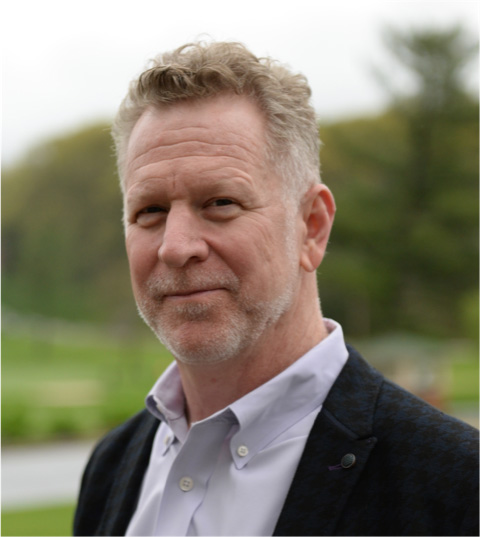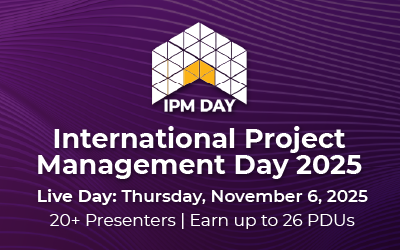By Alan Zucker
July 17, 2024

The Project Management Institute’s Pulse of the Profession® 2024 reported that hybrid (32%) is now the second most commonly used approach. Predictive (44%) still holds a commanding lead. And agile (26%) use fell by 2 percentage points.
Before we get too excited, the State of Agile Report shows different trends. Its respondents favor agile (70%) over hybrid (47%), and waterfall (35%).
Behind the Headline
Several factors may be driving these recent trends:
Agile and waterfall are the endpoints of the project management continuum, and hybrid is the vast middle. Most organizations do not practice either pure agile or waterfall; so hybrid is a more accurate description.
Interest in hybrids is new and growing quickly. The format of the PMP exam changed in January 2020. In the new test, 27% of the test questions to hybrid, and 23% were agile. This sparked an explosion in Google search traffic for “hybrid project management.”
Agile training has reached a saturation point. Scrum Alliance reports 1.5 million certificate holders, and Scaled Agile (SAFe) reports over a million trained practitioners. By comparison, there are about 1.5 million certified project managers (PMPs).
Agile may have “hit the wall.” Agile is fundamentally a mindset, not a methodology. The top challenges to agile adoption are organizational and cultural. The State of Agile Culture Report shows that only 10% of leaders demonstrate the desired qualities.
The Project Approach Palette
The project management profession historically described itself in discreet terms. Waterfall had a near monopolistic grip until the advent of agile. The profession then entered a bipolar world—agilists versus traditionalists.
In reality, project management is messy. It can be described as “the cathedral versus the bazaar.” Framework developers speak in the absolutist terms of the cathedral, while project managers blend practices as seen in the bazaar.
Hybrid allows us to label this blending of the vast color palette. Predictive, agile, and lean/Kanban can be viewed as the corners of a triangle with a near-infinite array of options. The spectrum of approaches can be labeled as:
- Predictive. The traditional, cascading, high-structured approach.
- Agile (Scrum). An adaptive approach with empowered, self-organizing teams.
- Lean/Kanban. Value-driven and flow-based principles that can be integrated into all approaches.
- Hybrid-Predictive. Mostly traditional structures with integrated agile practices; and
- Hybrid-Agile. An adaptive approach tempered by traditional constraints.
Predictive
Winston Royce first described the waterfall approach in 1971 as a software development methodology based on his experience building systems for spacecraft. He defined a series of cascading steps that went from collecting requirements to deployment operations.
Establishing requirements and design specifications early is a primary characteristic of predictive projects. This approach is used in construction and similar efforts where the cost of change is high. The projects often have rigid phase gates to confirm viability and completeness before moving to the next stage.
Project teams work on their individual components and periodically integrate and test their work. The project manager’s primary role is to coordinate and oversee the efforts of these functionally aligned teams. Limited inter-team collaboration is required.
Stakeholder engagement is greatest at the beginning of the project when requirements are being collected and analyzed. Throughout the development lifecycle, there will be periodic status meetings and reviews. It is often years before stakeholders see the finished product.
Agile (Scrum)
Agile is a mindset, not a methodology. Multiple frameworks (Scrum, eXtreme Programming, DSDM, Scaled Agile (SAFe), Disciplined Agile, etc.) enable teams to deliver value more quickly and predictably. The frameworks are not monolithic and represent a range of approaches and practices.
Scrum is the most commonly used methodology and anchors this leg of the triangle. It originally described a new to develop products and was later adopted for complex software projects by Jeff Sutherland and Ken Schwaber.
Royce realized that the waterfall approach’s delayed testing cycles and prolonged delivery times posed a significant risk. Scrum mitigates these risks through its iterative and incremental approach. Development cycles are generally timeboxed to 2 weeks, after which stakeholders provide feedback. The feedback is used to adapt and adjust the product and avoid the “I will know it when I see it” trap.
Scrum teams are small (less than 10), self-organizing, and harness the creative energies of knowledge workers. The command-and-control project manager is replaced with the servant-leader scrum master, whose primary role is to help the team mature. The product owner is an integral member of the team who represents the voice of the customer.
Lean/Kanban
Lean and Kanban are a set of principles and practices, dating back to the 1950s, originally developed by Toyota. Lean focuses on delivering value and eliminating waste. Kanban is a lean sub-practice that focuses on creating flow.
Lean/Kanban is the third leg of the triangle. While it is often associated with agile, its practices are universal. It is foundational to most agile frameworks, and very mature agile teams often focus on flow (Kanban). In Disciplined Agile, Lean is defined as a standalone lifecycle. SAFe 6.0 separates Team Kanbanfrom its Scrum approach.
Hybrid-Predictive
Hybrid-predictive primarily follows the linear structure of waterfall and integrates agile-like practices. The design-build-test-deploy structure effectively supports many project types. However, pure-predictive approaches can be rigid and rest on the strong assumption that the solution can be defined at the beginning of the project.
Software teams started using “modified waterfall” approaches in the 1970s, long before the advent of agile. They employed iterative and incremental delivery approaches to engage stakeholders. Prototyping and joint application design (JAD) sessions brought users and developers together to collaborate on the solution.
Even construction, which is the bastion of the waterfall approach, has embraced hybrid. Traditionally, design and construction are specialized and segregated activities. Architecture and engineering firms create blueprints and specifications that are then executed by construction companies. However, design-build combines these two activities into a single contract executed by a single firm. This approach improves collaboration, coordination, and communication. The benefits are shorter development cycles, lower costs, fewer mistakes, and clear accountability.
The hybrid-predictive approach can be described as leaning more toward the structure of waterfall and integrating agile practices. There are several use patterns. One is a structured project that employs agile techniques such as daily stand-ups, minimally sufficient documentation, and frequent stakeholder engagement. Another pattern is initial high-level design with iterative development and/or incremental delivery.
Hybrid-Agile
Many organizations claiming to be agile are likely employing a hybrid-agile approach. They follow a scrum-like model and employ many agile practices. However, constraints prevent the adoption of the agile mindset. These limitations are often tied to the organization’s culture, structure, and the nature of the work.
Large bureaucratic companies, government agencies, and organizations with low agile maturity fit this pattern. They may follow many scrum practices; however, they face many challenges, including:
- The project scope is fixed, and the complete solution is delivered at the end of the project.
- Stakeholders do not actively engage in the incremental product demonstrations and extensive user acceptance testing is done at the end.
- Teams are not empowered to make decisions. Decisions are made by management or by committee.
- Teams are not long-standing, and members are allocated to multiple projects.
- The product owner comes from the technology team and does not fully represent the voice of the customer.
© 2024, Alan Zucker; Project Management Essentials, LLC
Alan Zucker has over 25 years of experience leading projects and project management organizations in Fortune 100 companies. In 2016, Alan founded Project Management Essentials to share his passion for and experience in project management, leadership, and Agile.
Alan is a frequent keynote speaker and thought leader. He authors monthly articles, is regularly quoted in the industry press, and is a podcast guest. He is an adjunct faculty member at George Mason University and the University of Georgia; and is a senior instructor with several national, professional development organizations.
Alan has a master’s degree in economics from the University of Maryland and a master’s and a certificate in IT Project Management from the George Washington University. He is a Project Management Professional (PMP) and Certified Agile Professional (PMI-ACP) through the Project Management Institute. He also holds multiple Agile certifications from Disciplined Agile, Scrum Alliance, and Scaled Agile.
Visit Alan’s social media links to learn more.
Website: https://pmessentials.us
LinkedIn: https://www.linkedin.com/in/alanizucker/
Twitter: Alan @pmessentials_us
Learn more about IIL’s PMP® Exam Prep Course »
Disclaimer: The ideas, views, and opinions expressed in this article are those of the author(s) and do not necessarily reflect the views of International Institute for Learning or any entities they represent





